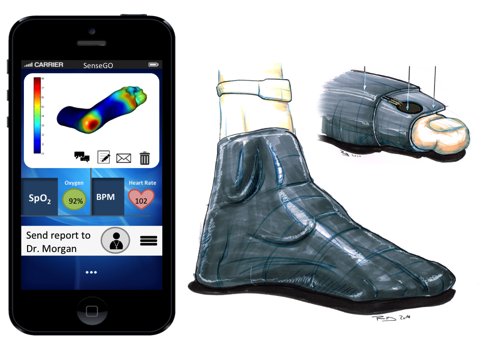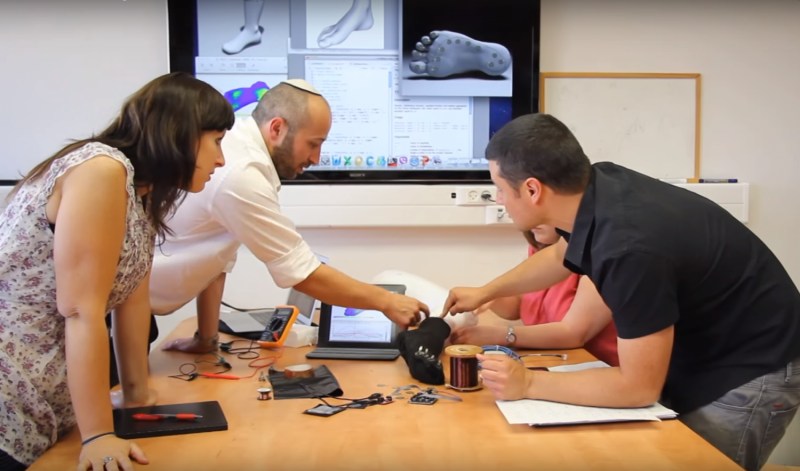Smartphones and intelligent socks to help prevent diabetic amputations

Diabetic neuropathy is a type of nerve damage associated with the development of foot ulcers in patients with diabetes. Resulting from anatomical deformation, excessive pressure and poor blood supply, it affects over 130 million individuals worldwide. It is also the leading cause of amputation, costing the United States economy alone more than $10 billion annually.
Diabetic patients are encouraged to get regular checkups to monitor for the increased pressure and ulceration that can eventually require amputation. However, ulcers are only diagnosed after they occur, meaning that patients require healing time, which dramatically increases healthcare costs.
Members of the BioDesign: Medical Innovation program, created by The Hebrew University of Jerusalem and its affiliated Hadassah Medical Center, set out to solve this problem.
"This is a significant medical problem that affects the lives of millions. We thought there must be a way to avoid these wounds altogether," said Danny Bavli, the group's lead engineer.
To address this challenge, Bavli partnered with Sagi Frishman and Dr. David Morgenstern, a leading orthopedic surgeon at Hadassah Medical Center. Together with other members of the Hebrew University BioDesign group, they developed SenseGO, a machine-washable sock containing dozens of micro-fabricated pressure sensors.

With SenseGO, changes in pressure due to incorrect posture, anatomical deformation or ill-fitting shoes are registered as electrical signals that are relayed to a smartphone app, which in turn informs the patient of developing risk.
Prof. Yaakov Nahmias, BioDesign program director, said: "This is a classic mobile health approach. By giving patients and their families the tools they need to prevent the development of ulcers, we can dramatically reduce health care costs related to diabetes."





















